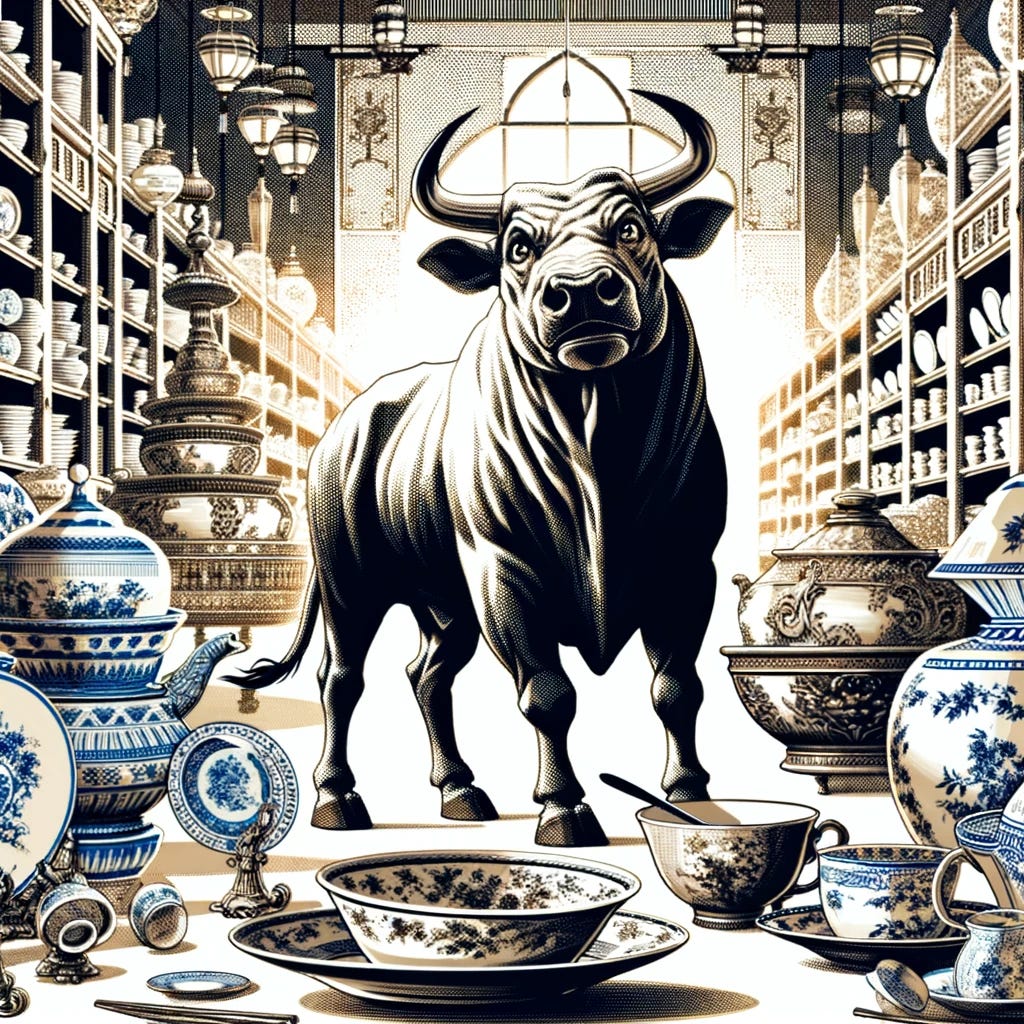Look at this bull!
Look at all that fancy china, too! What’s about to happen here?
“Bull in a china shop” might be the most obvious turn of phrase I’ve written about so far. Long ago, actual cattle might really wander into an area where merchants were trying to sell wares.
I’ll go ahead and cast some doubt on this naming narrative—by the time there was china in the UK, cattle were much, much better controlled and less apt to roam the city, but… well hey, it’s still very easy to grasp the idea right away.
I’m not sure where it originates—nobody is—but I know for sure that there were lots of other phrases like this around by the time “bull in a china shop” made its way to print in 1834. Another similar phrase, “a fox in a henhouse”, comes to mind right away. This phrase is even more direct and obvious than the bull/china reference, or at least it would have been to people alive at the time, when people were much, much closer to their sources of food.
Everyone understood what a fox could do…
Keep reading with a 7-day free trial
Subscribe to Goatfury Writes to keep reading this post and get 7 days of free access to the full post archives.




